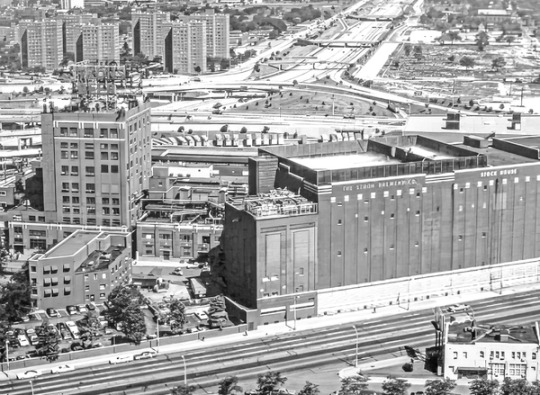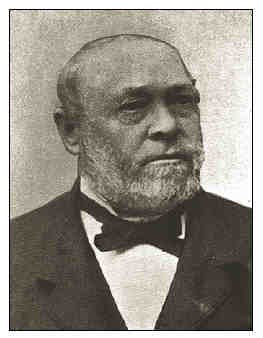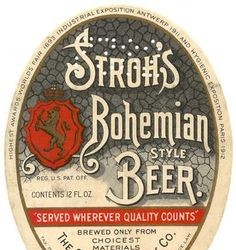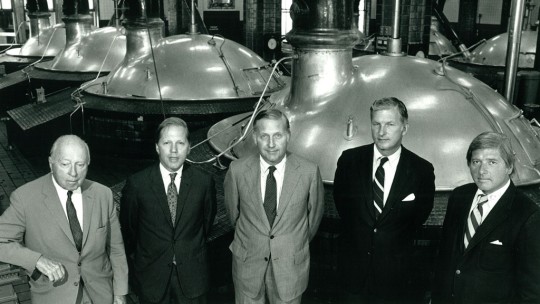#19th April 1956
Explore tagged Tumblr posts
Text


Grace Kelly photographed on her wedding day to Rainier III, Prince of Monaco on April 19th, 1956
#grace kelly#vintage#retro#old hollywood#classic hollywood#golden age of hollywood#vintage hollywood#old hollywood glamour#1950s#50s#photography#cinema#mine
263 notes
·
View notes
Text






The Kennedy Brides with the family patriarch on their wedding day. Circa, 1950s.
From Top to Bottom: Ethel Skakel Kennedy, June 17th, 1950. Eunice Mary Kennedy Shriver, May 23rd, 1953. Jacqueline Lee Bouvier Kennedy, September 12th, 1953. Patricia Helen Kennedy Lawford, April 24th, 1954. Jean Ann Kennedy Smith, May 19th, 1956. Virginia Joan Bennett Kennedy, November 29th, 1958.
#i would have put “dancing” in the caption too.. but i have no pics of that from jeanie's wedding.. anyways tw: JOE SR.. pls ignore weirdo!#ethel kennedy#joan kennedy#jacqueline kennedy#eunice kennedy#jean kennedy#patricia kennedy#joan bennett kennedy#virginia joan bennett kennedy#jackie kennedy#jacqueline kennedy onassis#jackie kennedy onassis#jackie o#jacqueline lee bouvier kennedy onassis#eunice kennedy shriver#patricia kennedy lawford#jean kennedy smith#the kennedys#the kennedy family#kennedys#kennedy#kennedy family#kennedyposting#joseph patrick kennedy senior#joe sr.#joseph kennedy#joe kennedy#wedding#bride
47 notes
·
View notes
Text

Grace Kelly watching with satisfaction at her wedding cake, right after she married Rainier III, Prince of Monaco on 19th April, 1956. 🫶🏰🍰
♡𓂃☁︎ 𑁍 ☁︎𓂃♡
#grace kelly#monegasque princely family#mpf#house of grimaldi#grimaldi#monaco#hollywood#old hollywood#wedding cake#royal event#royal wedding#rainier iii#prince rainier#prince of monaco#usa#america#american#american actresses#1950s#19th April#19th April 1956#1956#20th century#bride and groom
107 notes
·
View notes
Text
There is a price, always, and the price I can pay: he is arrogant, used to walking over women like a blast of Jove’s lightning, but I am a match: I feel a growing strength, I do not merely idolize, I see right into the core of him, and he knows it […]
Sylvia Plath, The Letters of Sylvia Plath Volume I: 1940–1956 — Aurelia Schober Plath, 19th April 1956
148 notes
·
View notes
Text
1950s wedding looks









Wedding party dress, 1950s.
Bridesmaid's dress worn to Grace Kelly's wedding, Priscilla of Boston, April 19th, 1956.
Wedding shoes worn by Grace Kelly, Evins, 1956, USA
Details of an Edwardian Battenburg lace wedding dress, 1950s.
Wedding dress, 1950s.
Wedding dress by Ann Lowe, New York City, worn by Jacqueline Kennedy, in 1953.
Organza wedding dress, 1950s.
Wedding dress, Mercia, 1950s.
Wedding dress model, Mercia, 1951.
Source 1, Source 2, Source 3, Source 4, Source 5, Source 6, Source 7
7 notes
·
View notes
Text

State Senator Thelma Marie Claybrooks Harper (December 2, 1940 - April 22, 2021) born in Brentwood, Tennessee, was the first African American Woman State Senator in Tennessee.
She was born to the Rev. William Claybrooks, Sr., and Clora Thomas Claybrooks, a sharecropper who parented eleven children. Her education began in a rural one-room schoolhouse before attending William Haynes High School, the only high school for African Americans in the County. She graduated from Cameron High School in Nashville.
She married Paul Harper (1956). They had two children.
While studying at Tennessee State University, she was selected to serve as Grand Jury Foreman for Davidson County’s 5th Circuit Court. This marked the beginning of her political career. She received a BS in Business Administration and Accounting from TSU.
She began public service when elected Executive Committeewoman for the 2nd District. She won a seat on the Metropolitan Council, the legislative authority of the Metropolitan Government of Nashville and Davidson County. She was elected to the Tennessee Senate for the 19th District. This District comprises a sizable portion of Davidson County, including the urban core of Nashville. The first African American woman to preside over this body, she chaired the Government Operations Committee and was the first senator to serve as Chair of the Tennessee Black Caucus.
She was a delegate to the DNC in 1980, 1984, 1988, and 1992, and, in 2000 she was one of the convention speakers for former Vice President Al Gore. She served as the 2nd District Councilwoman and as the 19th District State Senator.
She sponsored the legislation renaming a portion of US Highway 41 to Rosa Parks Boulevard. The bill was passed in both the House and the Senate.
She did not file to run for re-election in 2018. She retired from the State Senate after serving 28 years. She worked with five sitting mayors of Metropolitan Nashville and Davidson County and four governors of Tennessee. She was a Golden Life member of Delta Sigma Theta Sorority and the longest-serving female state senator in Tennessee history. #africanhistory365 #africanexcellence #deltasigmatheta
2 notes
·
View notes
Text
Muppet Mainstage, April 19th, 2024
youtube
“Don’t Sugar Me” was written by Norman Monath and Walt Kelly in 1956. The song was first performed on Sam and Friends, and performed again in season 1, episode 22 of The Muppet Show (1976). In the later rendition, the song is performed by a miniature Miss Mousey (Jerry Nelson) in a tea pot, who is being watched by Statler (Richard Hunt) and Waldorf (Jim Henson).
3 notes
·
View notes
Text

Strohs Brewery 991 Gratiot Ave
Stroh Brewing Company started with Johann Peter Stroh in 1775 in Kirn, Germany. Johann and his family lived in a house with an adjoining brew house attached, and ran a local inn that served meals and their family’s recipe for Bohemian-style Pilsner Ale. Johann had three sons and one daughter. His second son, Georg Freidrich Stroh, inherited the brew house. Georg’s youngest son was
Johann Bernhard Stroh (known to the world as Bernhard), who was born in 1821. On February 22, 1848, revolutions erupted across Europe. With all the turbulent violence surrounding Europe in the mid-19th century, and with his father Johann’s death and his elder brother Georg inheriting the family business, a 27 year old Bernhard Stroh, who had learned the brewing trade, immigrated to the United States.

Bernhard Stroh arrived in the United States in 1850. He immediately started his own business. Stroh opened a brewery at 57 Catherine Street…He developed a market for a new light lager beer among the larger German immigrant population, and names his new company Lion’s Head Brewery, adopting the Lion’s Crest logo from Kyrburg Castle in Kirn, Germany.
The company uses this same crest as their logo to this day. With only an investment of $150 (in 2016 dollars, this would amount to $4,409.53) that he provided himself through working for the family inn back in Germany, Stroh had to be very frugal in his spending. By 1860, Stroh’s customers had a desire for Stroh to start bottling his famous beer so they could enjoy the Bohemian-style Pilsner Ale at their homes.

Bernhard Stroh would have his sons personally cart small kegs of beer to his customer’s homes and business by wheelbarrow.
Stroh’s would not only become Detroit’s largest brewer, but the third largest in the country.
This massive, million-square-foot factory at Gratiot near I-75 grew as the company did, with buildings dating from the 1860s to 1914. In late 1890, the firm Spier & Rohns was hired to make extensive additions and improvements to the Stroh campus, including building a 25-foot-by-70-foot fireproof stockhouse, a 60-foot-by-100-foot bottling works, and a new ice-machine plant. These additions made the brewery the largest in Michigan and formed some of the most visible parts of the plant.
By 1956, the Detroit brewery was pumping out 2.7 million barrels of beer — 83.7 million gallons.
he 1970s and 1980s were very productive years for the Stroh’s; sales continued to increase with the acquisition of Goebel’s, new leadership came in 1967 with John Stroh becoming CEO and Peter Stroh, Gari Stroh’s son, became President. The duo expanded the company to its greatest height throughout the two decades with new marketing and aggressive advertising strategies. With increased sales, the Stroh brewing company was able to match the big three car companies in terms of salaries and benefits. Early in the 1980’s, Peter Stroh started looking to take Stroh’s to the national stage, and made a bid on the Schaeffer Brewing Company and Schlitz Brewing Company. Schaeffer started to go into debt in the late 1970s and early ’80s, making the buyout from Stroh’s all too easy in 1981. Schlitz accepted a buyout offer of $17 a share. Schlitz became a wholly owned subsidiary of the Stroh Brewing Company, making Stroh the third-largest brewery in the United States. With all this expansion, Peter Stroh, now CEO at this time, realized his company was overextended. By 1985, Peter Stroh recognized his company was operating with excess capacity, On Feb. 8, 1985, Stroh’s announced it was closing its Detroit facility, calling it too costly to run and too inefficient compared with newer facilities it had acquired. The plant was shuttered that May, bringing an end to 135 years of tradition and costing 1,159 Detroiters their jobs.

The factory was imploded in two phases -- on April 13, 1986, and July 13, 1986 -- with the land soon redeveloped as Brewery Park.
In 1999, the struggling company was imploded, too, split up and sold to Miller Brewing and Pabst.
2 notes
·
View notes
Video
youtube
On 19th February 1980 Ronald Belford “Bon” Scott died.
Ronald was born on July 9, 1946 in Kirriemuir, Bon’s parents hailed from musical families; his father, Charles, known to friends and relations as Chick, played drums in the Kirriemuir Pipe Band and performed with the local light-opera company. In 1952, the Scott family relocated to Australia.
The Scott’s first resided in Melbourne before settling in the Adelaide suburb of Sunshine. In 1956, Bon’s brother Graeme was diagnosed with asthma and the Scott family relocated to Fremantle. Scott who rose to fame as the leading singer and songwriter of the hugely popular hard rock band AC/DC during the 1970s. He loved music from a young age and was a highly creative and rebellious youngster.
Scotland’s Fife Free Press reported in 1962: “One of the side drummers in the Fremantle Pipe Band, who played at the opening ceremony of the Empire Games in Perth, was Ronald Scott, son of Mr. and Mrs. Charles Scott, who formerly resided in Roods, Kirriemuir.
As is common with unruly teenagers, he often found himself in trouble with the authorities. He dropped out of school at 15 and had brushes with the law which had him sent to the Riverbank Juvenile Institution. Labelled as a social misfit, he was denied a position in the Australian army. He worked at several odd jobs to support himself after leaving school.
Scott started playing drums during his adolescent years and formed his first band The Spektors, in 1964. He played for some other bands as well before joining AC/DC as their lead singer. The band’s popularity reached new heights after Scott joined them; their debut album ‘High Voltage’ was a big hit. Within a year the band brought out the single, ‘It’s a Long Way to the Top (If You Wanna Rock ‘n’ Roll)’ which soon became known as the quintessential rock anthem.
On 19th February 1980, Bonn passed out after a night of heavy drinking in a London club called the Music Machine 1980, he was left to spend the night by a friend. The next day he was found lifeless and taken to the hospital where he was pronounced dead on arrival.
The official cause of his death was listed as acute alcohol poisoning. His grave is considered the most visited grave in Australia and the National Trust of Australia has included it on its list of classified heritage.
Fans of the singer flock to Kirriemuir, pandemics allowing, for an annual 3 day celebration of his life called Bonfest.
It was originally held in July on the weekend closest to his birthday but had moved to May because of other events in the local area during July, however this years Bonfest will be held on Friday 28th April • Saturday 29th • Sunday 30th April 2023 https://www.bonfest.com/
#Scotland#scottish#scots-australian#australian#drummer#Singer#rock singer#rocker#history#musical history
11 notes
·
View notes
Text
Elfelejtett magyarok
Rod Kasznar was born on April 6, 1956, which makes him 68 years old as of 2024.Rod Kasznar is a Brazilian actor and filmmaker known for his work in both theater and television. He has appeared in various Brazilian soap operas, TV series, and movies. Kasznar is also recognized for his contributions to the arts in Brazil, where he has been active in the entertainment industry for many years. His work spans multiple genres, and he has gained a reputation for his versatile performances. Additionally, Rod Kasznar is involved in producing and directing, further contributing to the cultural scene in Brazil.
Rod Kasznar is of Hungarian descent, but he is Brazilian. While his family background is Hungarian, he was born and raised in Brazil and has primarily worked within the Brazilian entertainment industry. His Hungarian heritage is a part of his cultural identity, but he is best known for his contributions to Brazilian theater and television.
Rod Kasznar, whose full name is Roderick Kasznar, comes from a family with strong ties to Hungarian culture. His Hungarian heritage likely played a significant role in shaping his cultural background, although specific details about his family's immigration to Brazil or how they maintained their Hungarian traditions might not be widely documented.
Hungarian immigrants have a rich history in Brazil, with many arriving in the late 19th and early 20th centuries. They brought with them their language, traditions, and customs, which they integrated into the diverse Brazilian society. For someone like Rod Kasznar, this heritage could have influenced aspects of his life, including his artistic sensibilities, while also blending with the vibrant cultural landscape of Brazil.
Unfortunately, detailed public information about Rod Kasznar's personal connection to his Hungarian roots, beyond the acknowledgment of his ancestry, is limited.
Rod Kasznar is openly gay. He has been public about his sexual orientation and is known for being an advocate for LGBTQ+ rights. His openness about his identity has made him a notable figure within the LGBTQ+ community in Brazil, where he continues to contribute to the arts and promote equality and representation.


𝗠𝗮𝘁𝘁 𝗖𝗿𝗼𝗺𝘄𝗲𝗹𝗹 and 𝗥𝗼𝗱 𝗞𝗮𝘀𝘇𝗻𝗮𝗿 for 𝗦𝗽𝘂𝗿𝘀 19 — M2M Couples (1991)
5K notes
·
View notes
Text
A Novato church celebrates 135 years and 60 years at its current location.
Will there be another 135 years for Our Lady of Loretto Parish? Pastor Fr. Anthony Vallecillo hopes so!
Dozens gathered at 11:30 AM for a special anniversary celebration Mass and picnic at Stafford Lake Park on Sunday Sept. 22.
The weather at space #2 overlooking the water and the hills in the distance was ideal and summer-like for the first day of the fall-equinox.
A cluster of weeping willow trees provided just enough shade for the celebrants Fr. Anthony (who is best known by the parishioners as ‘Fr. Tony) and Associate Pastor at Our Lady of Loretto, Fr. Clement Okeke to conduct the Mass, which was in both English and Spanish, simultaneously.
Parish music director Richard Elliot along with the choir and musicians provided the music for the Mass liturgy, which they looked forward to for several weeks in planning. It was a mixture of both Spanish and English songs especially for Christian liturgy.
Since April of last year, the parishioners of Our Lady of Loretto have been commemorating the 60th anniversary of the “new location” at 1806 Novato Blvd which was officially dedicated in April of 1963.
Yet, the full history of the congregation-parish goes back much further, almost to the earliest days of Novato when it had been part of a Mexican land grant after the era of the old Missions and conquistadors of early Spanish California. Back then in the early 19th Century, it was known as Rancho de Novato. And, the church congregation had its roots in that atmosphere, give or take a few decades, in 1892.
The church’s first location was on land donated by the Connell Estate on Nave Drive which later became South Novato Blvd.
A fire in 1935 burned the church to the ground. Determined, the parishioners had the church rebuilt in just two years in 1937 on Grant Ave.
While the area around Novato was known mostly for farming and ranches, during The Great Depression, according to the Novato Historical Guild, the economy had a negative impact on farming.
Novato remained relatively ordinary and rural until shortly before WWII when Hamilton Air Field became Hamilton Air Force Base.
After WWII the population of Novato suddenly grew, from a small town of about just over 7,000 inhabitants to over 17,000 by 1960.
As Fr. Tony explained during the commemorative Mass homily that morning, amid the geese grazing in the grass in the distance, “two people were instrumental in helping get the parish to a new location.”
The two people were: Sister Jeanette Lombardi and Fr. Charles Farrell.
No sooner did Fr. Farrell arrive to Our Lady of Loretto to serve as its pastor in 1956, he knew immediately that the church on Grant Avenue would not be able to accommodate the growing number of people now attending the parish services. “He could foresee that a new location would have to be established and soon,” said Fr. Tony.
With land that had been purchased from the Azevedo Family, Fr. Farrell organized the forming and construction of the new location. First the parish school, then the parish hall and then the current church building, completed in 1963.
Fr. Farrell with the help of Sister Jeannette Lombardi was able to get the Ursuline Sisters from Santa Rosa to teach at Our Lady of Loretto School.
Fr. Farrell served Our Lady of Loretto for more than 20 years until 1977. Sr. Jeanette recalled Fr. Farrell as “bright, strict and a reserved but kind gentleman.”
Fr. Tony noted that both Sr. Jeanette and Fr. Farrell took on a difficult job that required commitment and “some sacrifice.” Resounding the liturgy’s theme for that Sunday of “service to others” as Jesus in the Gospel of Mark, Chapter 9 said to his Apostles, “If anyone wishes to be first, he shall be the last of all and the servant of all.”
No doubt in Fr. Tony’s mind, “our current church location on Novato Blvd wouldn’t have been possible if it were not for the efforts and dedication of Sr. Jeanette and Fr. Farrell,” he said.
Looking forward, much of the work that Fr. Tony and Fr. Clement do is fostering a community of faith; bridging the gaps between a diverse and eclectic mix of people.
More than 60 years ago, the culture was predominantly white with residents being of mostly European descent/ancestry.
Since the end of WWII, especially since the 1960s, Novato as well as the rest of the nation has experienced tremendous growth and change.
With the U. S. Census Bureau and others like the Pew Center of Research, demographic data shows that by 2030 the population of the United States will be more diverse. And, that the Hispanic/Latino demographic of about 64 million will more than double over the next two to three decades.
Of that 64 million, also according to Pew Center for Research, 61 percent of Spanish-speaking people believe that religion and family are most important.
And, as Fr. Tony commenced with a final blessing as Mass ended, “let us pray that our parish of Our Lady of Loretto continues on to the next generations for at least another 60 years or perhaps another 160 years.”
Parishioners Lisette & Chris Dunham who sat close to the altar table set amid the weeping willow trees smiled as did many around them. “Will the world still be here 160 years from now?” “Who can say?” Exclaimed Lisette, “there’s so much in life we humans can’t control,” she said. “We will just have to leave that up to God.”
After Mass, a potluck picnic & barbecue continued at Stafford Lake Park until after 3 PM that afternoon sponsored by the Parish chapter of the Knights of Columbus.
On October 6, Our Lady of Loretto will be hosting a “fresh cracked-crab Dungeness Crab-Feed. For tickets and more info visit Our Lady of Loretto website and the crab-feed event page.




0 notes